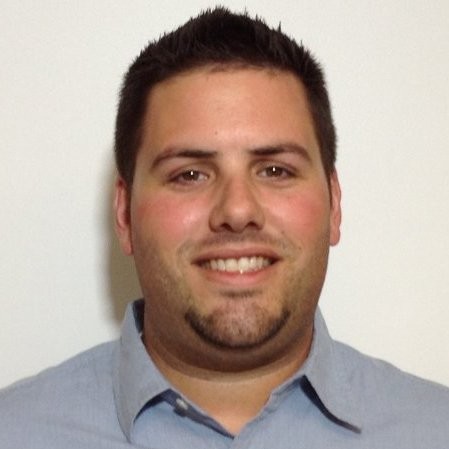At the end of the year, we think about the holidays, spending time with family and friends, and much-needed time off. For salespeople and those in sales enablement, though, this is the season of something big: the annual sales kickoff.
Sales kickoffs, or SKOs, are the biggest sales meetings of the year, held as the year begins. Salespeople from across the country, and the world, gather for a few days of learning and collaboration. Sales kickoff meetings offer time to reflect on lessons learned in the past year, how to grow the business, and best practices from top performers. Think of it like a massive, inspirational sales QBR, except with team building and in-person fun.
This year, many companies that have adjusted to remote sales and remote sales management now have to embrace a virtual sales kickoff, and the stakes couldn’t be higher.
“Without proper planning, virtual kickoffs reduce learning and networking opportunities for the sales teams, major benefits traditionally derived from sales kickoff meetings,” Shayne Jackson, senior director analyst in the Gartner Sales practice, says. Some leaders have gotten creative, like how Zoom's sales team gamified their engagement at their August conference, to boost the fun factor and also hold employees accountable. That’s one approach to a creative sales kickoff. But there’s no playbook for a virtual SKO in the middle of the pandemic for a revenue operations leader, so we’re all learning as we go.
Clari’s virtual SKO will land in February 2021. Already, I’ve learned a few things in the process of finding our sales kickoff theme, and starting our sales kickoff planning this year.
Build an Effective Sales Kickoff Agenda
Just because commutes were canceled doesn’t mean managers can add more work time into the day. Zoom fatigue—a point of reduced returns, where people tend to zone out and struggle with concentration—starts after 4 or 5 hours of video calls. The same goes for the virtual SKO. Consider a schedule that's more compact and allows attendees a few hours of free time before and after the event. Build breaks into your schedule. If possible, more and shorter days are better than fewer long days. Consider splitting the day, with SKO activities in the afternoon to avoid feedback like, “We never have enough time to work during the SKO.”
Personalize the Event
No matter your company size or industry, your sales reps harbor different experience levels. Planning messaging and content that will resonate with many, not just a few, is always a challenge when preparing the session calendar for an SKO. The SKO has to feel almost as supportive as a one-on-one, but still serve a larger audience. A virtual SKO offers an advantage—you can tailor content and delivery to be specific to individual groups of sellers, with the ability to run multiple meetings at the same time. In previous years, the ability to structure training and enablement was limited to venue capacity. This often meant sacrificing some elements due to space constraints. In a virtual world, our only constraint is time, and time zones with a global team. We can tailor programming to more specific audiences.
Increase Engagement
One of my initial concerns about a virtual SKO was: How do we keep teams engaged virtually? Sitting in an auditorium surrounded by peers versus tuning in to a video for hours are two entirely different worlds. How can we keep people excited during a virtual SKO?
Production value becomes a critical element of success. A master of ceremonies who can channel their inner game-show host can serve as a common thread between sessions who drives the excitement.
Consider offering pre-recorded content, so the organizers can take a breath or interact without having to also monitor a live session. You can create live polls to keep people attentive, or work to randomly pair people in team activities.
Consider creating a post-SKO process where the ideas, learnings and collaboration become part of your enablement track for the year ahead.
Feature the Wow Factor
At an SKO years ago, Colin Powell, the former general, secretary of state, and chairman of the joint chiefs of staff, talked about his life and shared lessons he learned in the military that helped him in his career and business. Attendees hung on his every word.
Guest speakers, thought leaders, board directors, and customers make an SKO memorable. With travel no longer a factor, your potential speaker pool broadens, and you have more flexibility in terms of scheduling. Having a wide variety of speakers will break up the Zoom days and give your teams an enjoyable experience. One caveat: Contact guest speakers well in advance, as they book fast.
Creating a Memorable Experience
My own SKO experiences have included traveling to New York City, Toronto, San Francisco, Miami, and Austin. I’ve stayed at lavish hotels. I’ve played rounds of golf, hiked mountains, eaten Michelin Star meals, and created memories with coworkers. One of the most challenging things to overcome with a virtual SKO is the loss of that in-person experience. With a virtual SKO, it’s critical to ensure the agenda is an equal mix of learning sessions and fun activities.
Some suggestions:
- Produce special virtual Zoom backgrounds
- Create competitions that force attendees to step away from their desks
- Consider hosting your event on an event platform, which would serve as a virtual central location for the meeting, content, and delivery
During Clari’s SKOs, we reflect on the year behind, energize for the year ahead, strive for inclusivity, and show appreciation for our teams. No one has the perfect recipe for a virtual SKO—it’s such a new concept. The goal is to deliver a world-class virtual SKO that delights your users and makes your sales team feel appreciated and recognized for their efforts during this challenging year.


